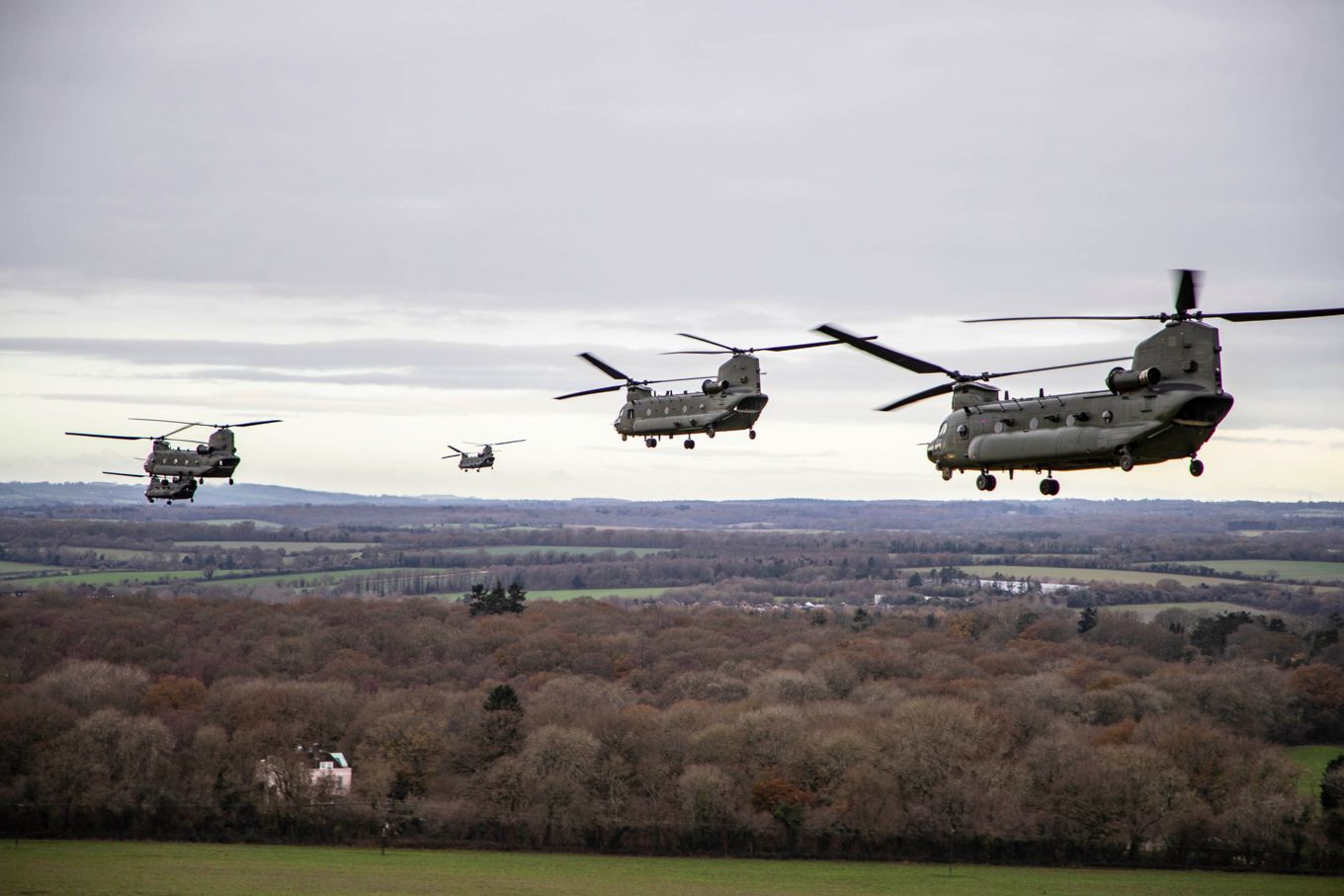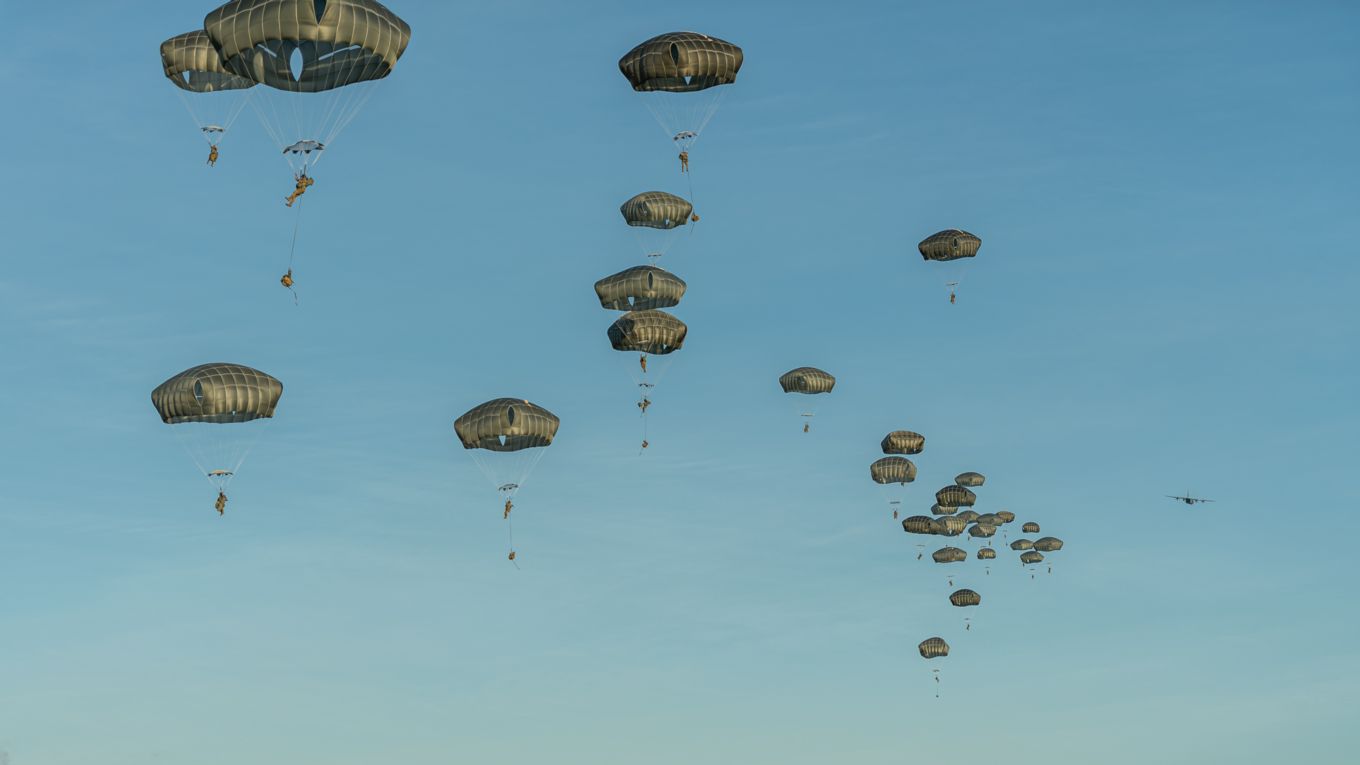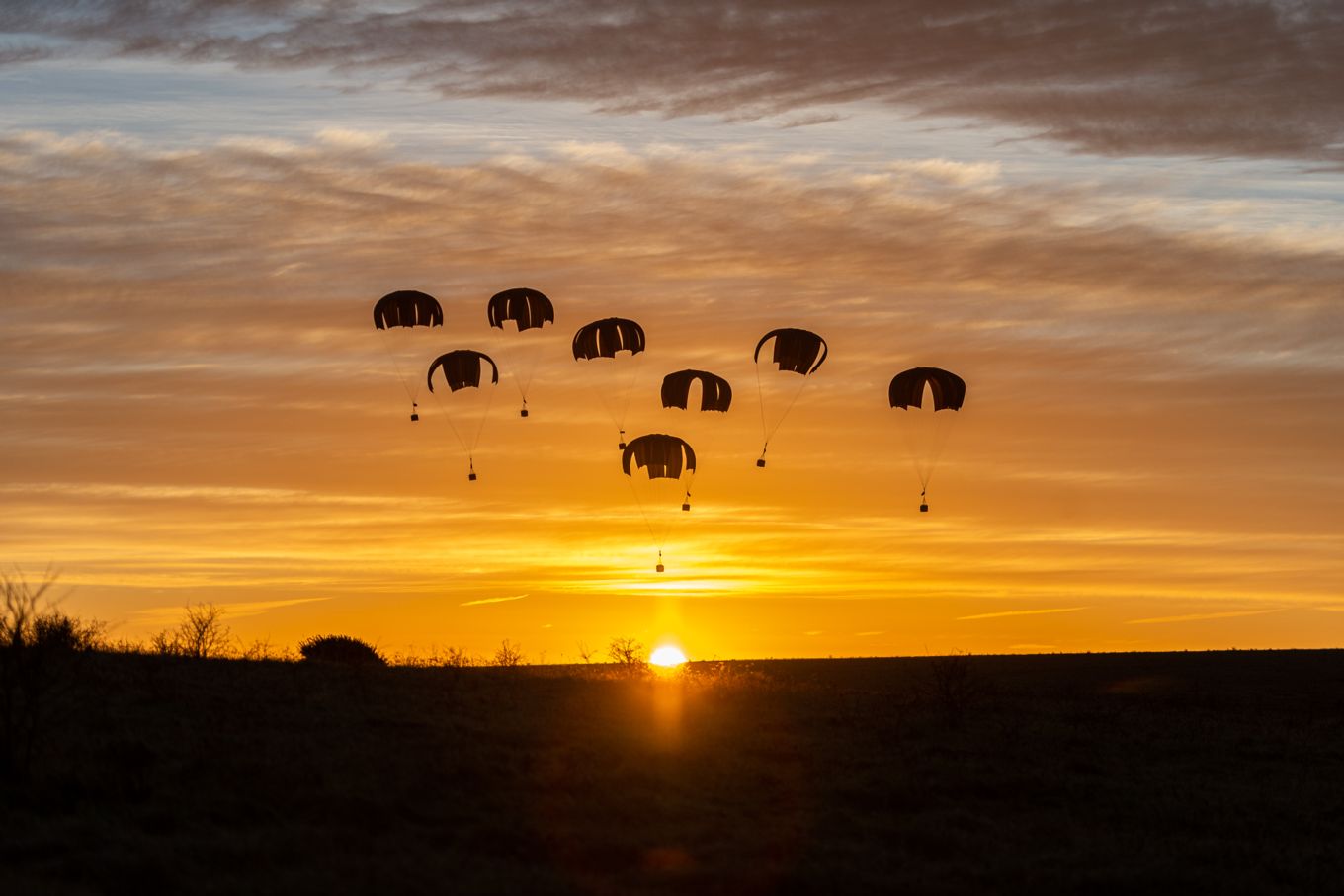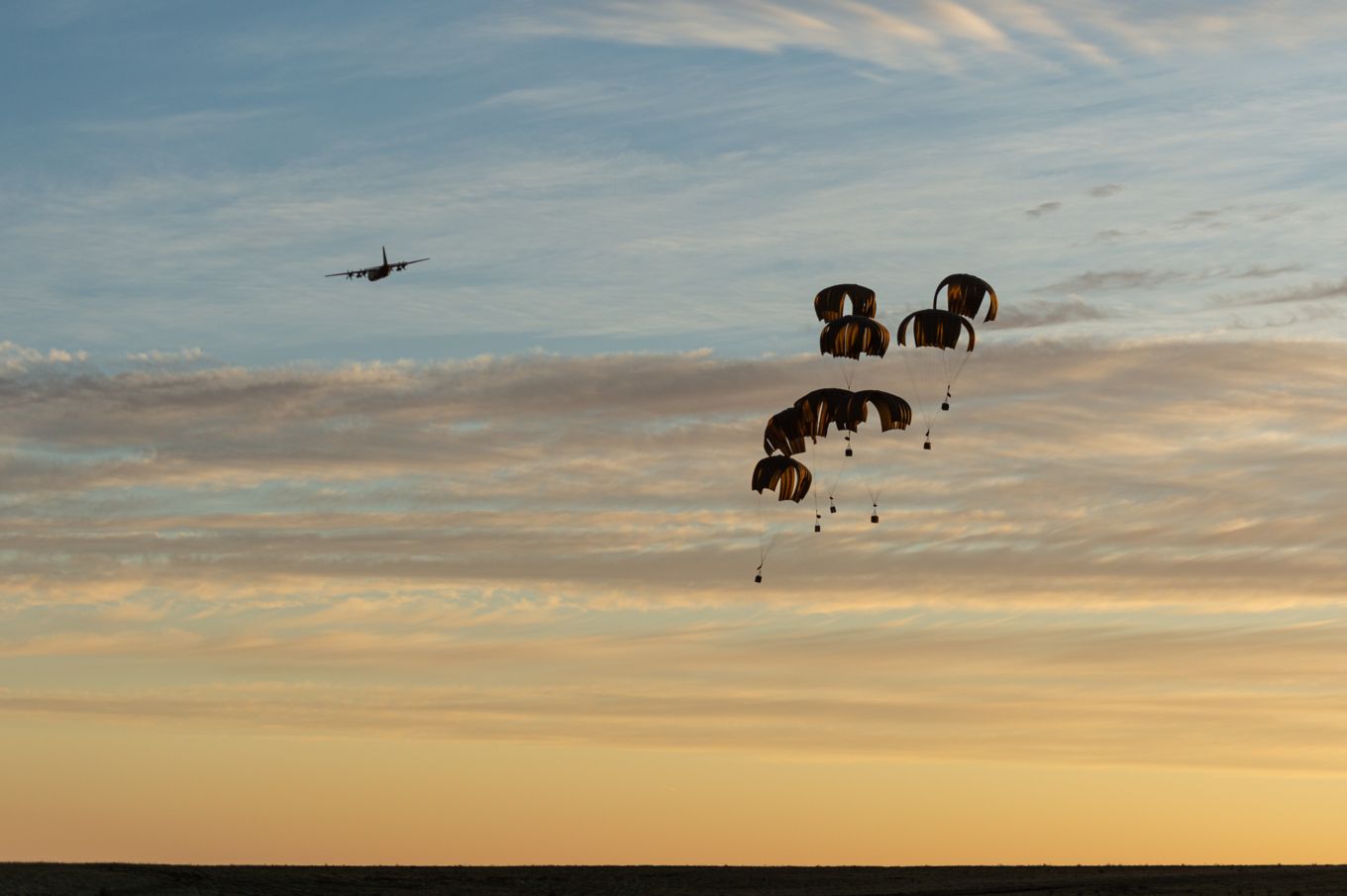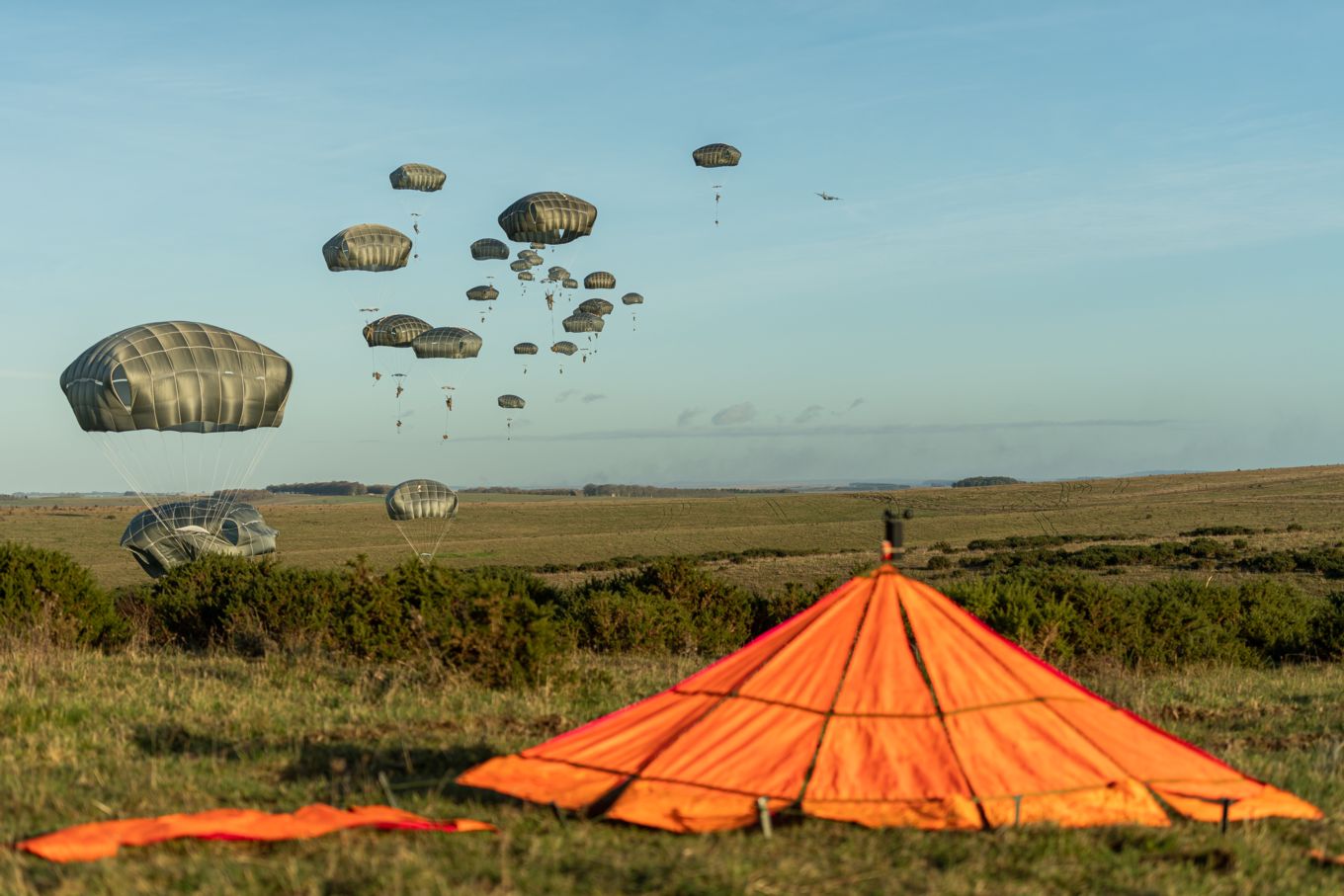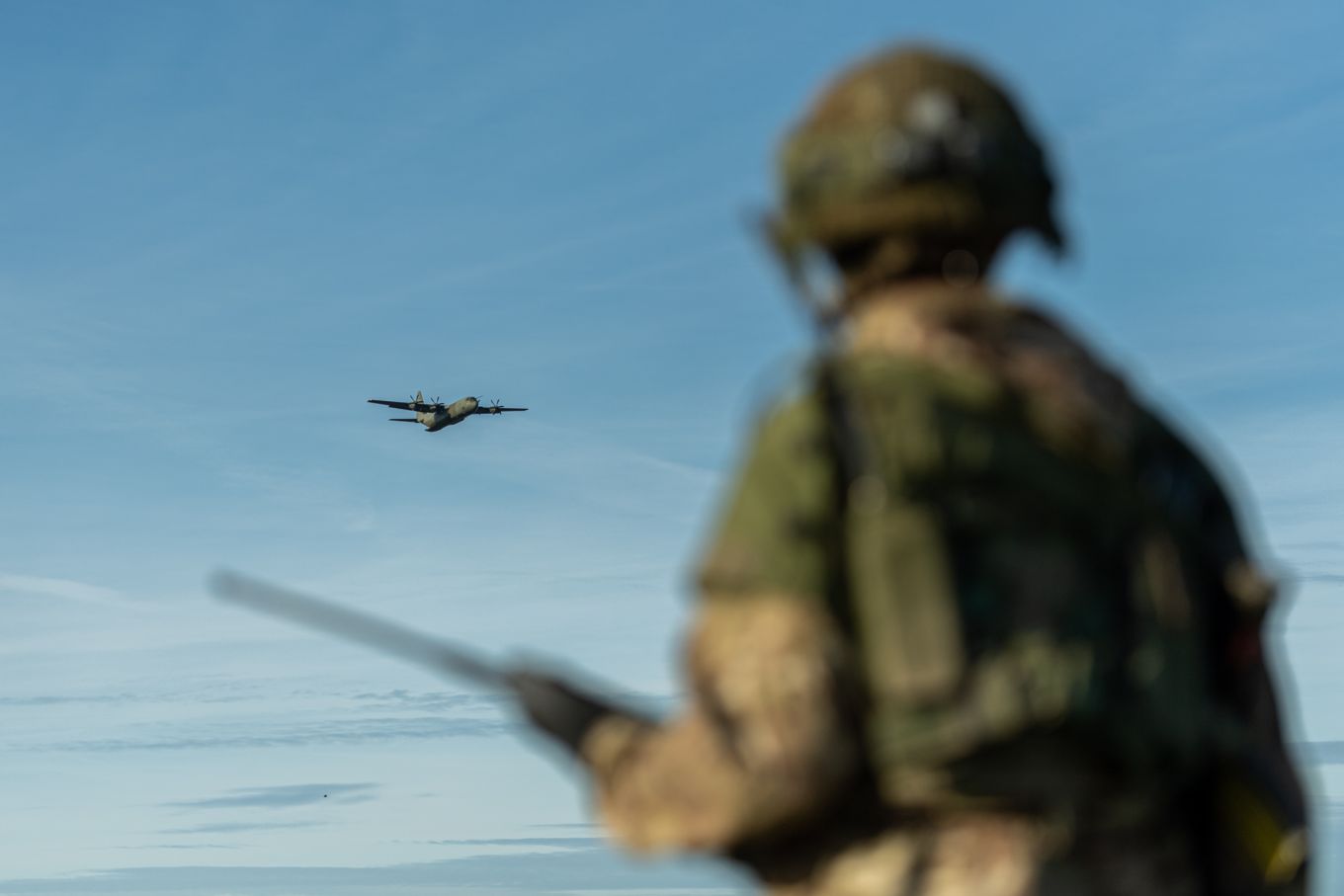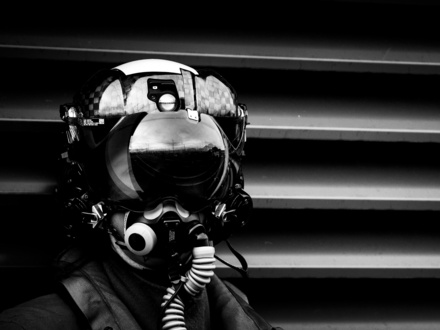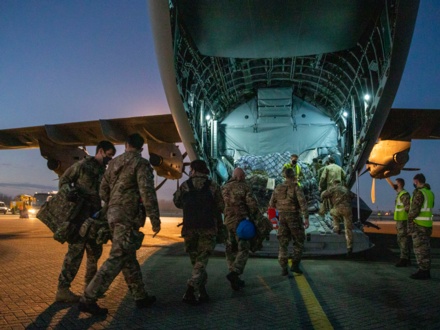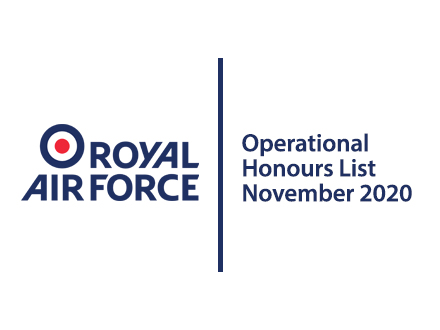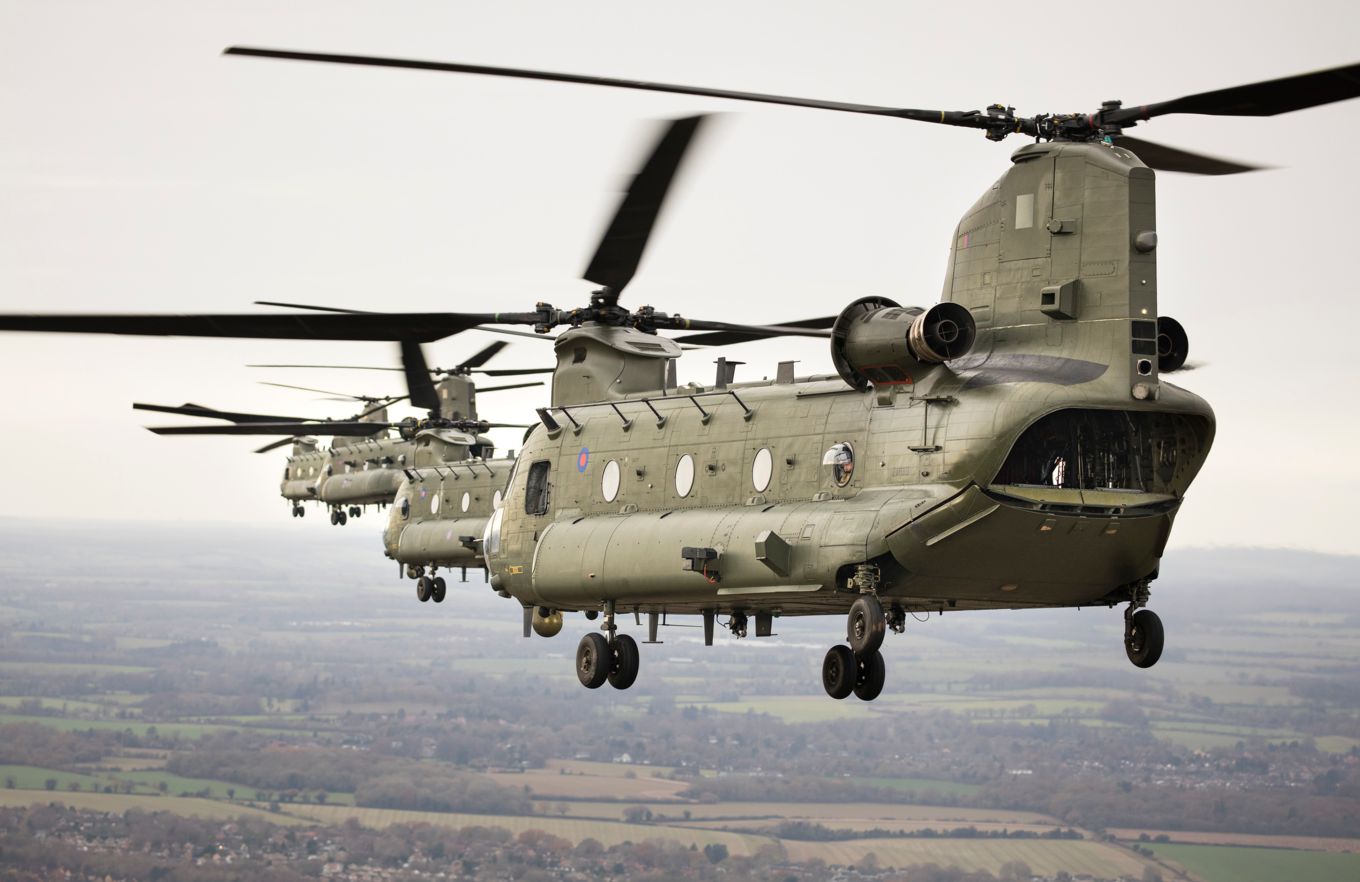
Personnel and Aircraft from the RAF have been supporting 2-Para Battlegroup as they prepare to take over as the lead infantry unit within 16 Air Assault Brigade.
In a mass show of rotary power, the Royal Air Force from Joint Helicopter Command (JHC) lifted troops, vehicles and supplies on to Salisbury Plain from Keevil Airfield.
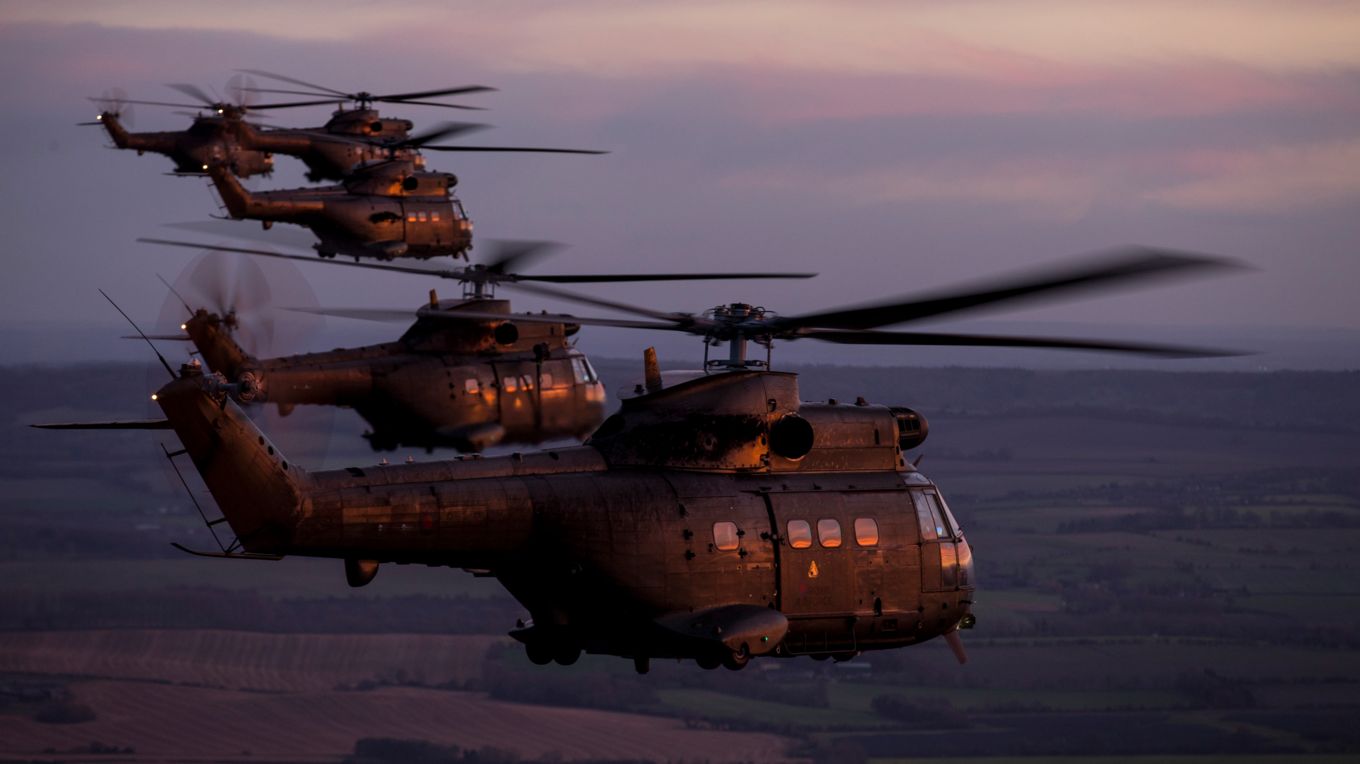
Chinook and Puma support helicopters escorted by Army Air Corps Wildcat reconnaissance helicopters and Apache attack helicopters delivered waves of assaulting troops onto Imber Village throughout the 4th December.
The 21 aircraft made up the largest British-led air assault exercise for many years and is the largest gathering of British military helicopters since Operation Moshtarak in Afghanistan in February 2010. The RAF helicopters moved the 1,300 strong multinational force of 2 Para Battlegroup, capturing the remote village to use as a base for further missions on the windswept training area.
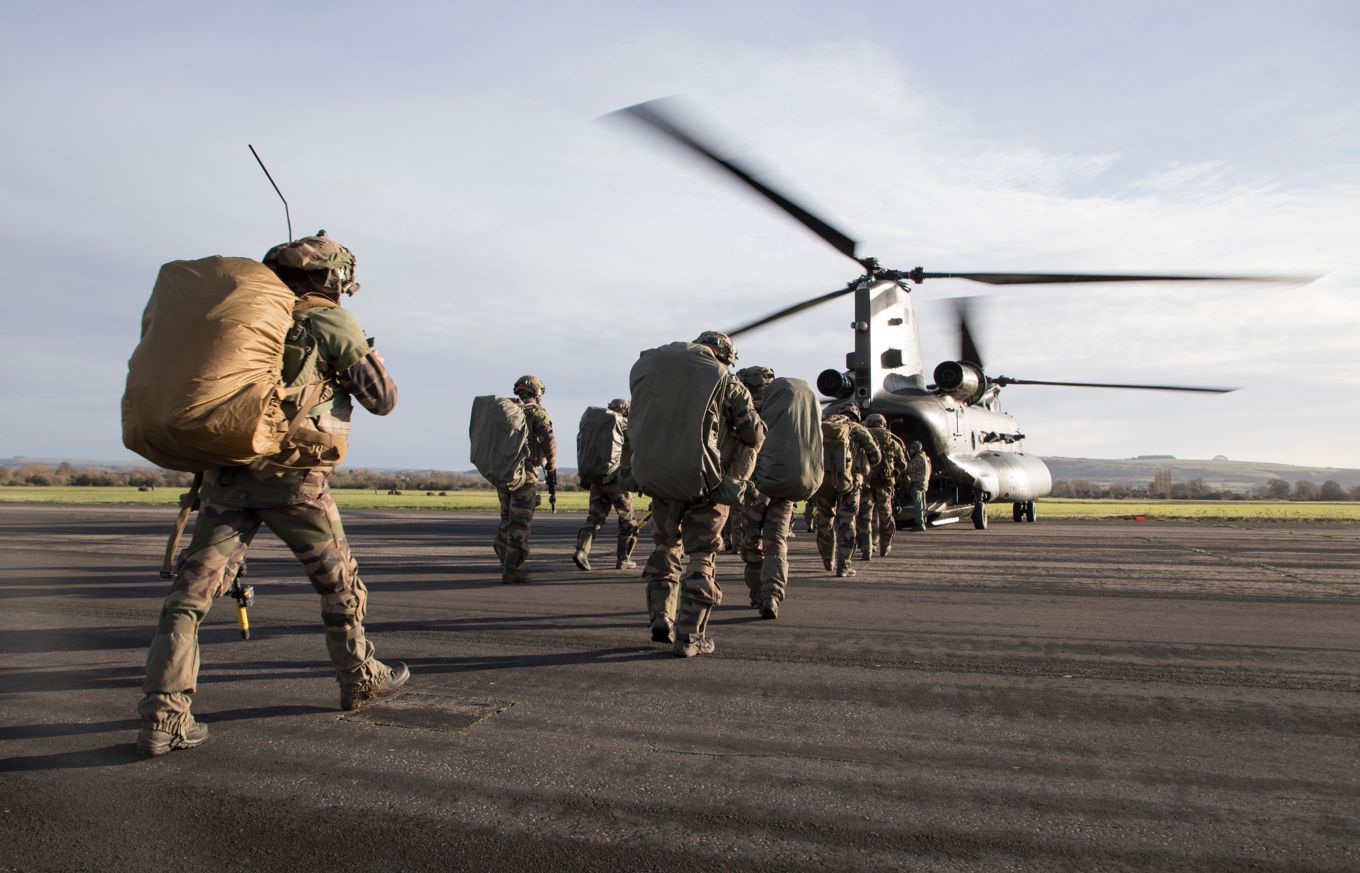
“JHC Force Elements have had the rare opportunity to conduct a Battle Group scale Air Assault during Exercise WESSEX STORM. Nine Chinook from 18(B), 27 and 28 Squadrons, six Puma from 33 Squadron inserted 2PARA BG from Keevil Airfield to targets surrounding IMBER village on Salisbury Plain Training area. These were protected by four Apaches from 664 Squadron and two Wildcats from 661 Squadron who also operated in find, fix and strike roles around the target.
“All parties mutually benefited from the experience; be it 2PARA using aviation prior to their assault or JHC FEs working closely together in support of troops.
“To be afforded the position of AMC, responsible for 21 aircraft, was an honour and a privilege but all parties involved should be proud of collectively delivering a hugely successful mission. The concept of large scale Battle Group Level Air Assault has now been proven.”
Flight Lieutenant Ryan Stowe
Air Mission Commander
British, French and American paratroopers are taking part in Exercise Wessex Storm. Running for six weeks, the British from 16 Air Assault Brigade, the French 2e Régiment Etranger de Parachutistes (2e REP) and the American Army's 2nd Battalion, will experience intense training. Operating together on the exercise will result in active forces who are ready to respond together to international emergencies.
Exercise Wessex Storm will prepare troops to serve as the lead infantry unit within 16 Air Assault Brigade, the British Army's global response force. The force trains regularly and is ready to deploy at short notice on operations around the world. The troops are equipped to deploy by parachute, helicopter and air-landing and their core role is to maintain the Air Assault Task Force.
A major element to the Exercise was to assault and capture Keevil airfield, in order to bring in troops and supplies and act as a base to conduct further operations against the enemy. The airfield was formerly used as an RAF station and is now maintained for military and training purposes, predominately by aircraft from RAF Brize Norton and Joint Helicopter Command.
Over the night of 1st December, paratroopers and supplies were dropped from US and UK C-130 aircraft to commence a large assault on the airfield, fighting through enemy positions before successfully capturing the key objective by first light.
Among the first units onto the airfield were the Airfield Support Squadron of the Royal Engineers, tasked with carrying out repairs to the operating surface, as well as the Royal Air Forces Tactical Air Traffic Control Unit (TAC ATC).
Often overlooked, they are a small unit with 10 Controllers who are responsible for initiating and setting up Temporary Landing Zones (TLZ) out in the field of operations. Now based at RAF Brize Norton, the unit began when a team was assembled during the Falklands conflict and assigned the task of setting up and operating landing areas on the damaged airfields of the islands.
From this historical requirement, the TACATC now apply their trade in both peacetime and during conflicts. A Temporary Landing Zones (TLZ) can be activated within a few hours, with everything needed to support the aircraft landing safely in a couple of backpacks.
Flight Lieutenant Pete Baird, Section OC, on the exercise explains what makes a good TLZ when he said:
"Somewhere long and flat with no obstacles or trees. Aircraft have minimum dimension requirements. We have to consider the weather, crosswind limits, payload of the aircraft, fuel and the pilot's currency. If they are a junior pilot, they might need a little bit more. A Hercules requires a minimum length on a paved strip of 2500ft with a 60ft width, although 120ft is the ideal width."
Flight Lieutenant Pete Baird
Section OC
For TACATC to secure a TLZ, a pre-reconnaissance analysis is carried out in advance, with most research untaken remotely online, however, the real test is a physical assessment as most satellite imagery isn't current. The evaluation begins on the ground and establishing the best direction for the landing strip. An inspection is then made by meticulously assessing the site and testing the soil.
For the Tactical Layout Lighting System (TALLS) the installation of fluorescent visual markers known as day panels are then placed in a position as a visual aid during the day, or in the dark, infrared markers are used. In a hot desert with intense heat that can bleach markers; simple plastic bags filled with sand have been used as it does the job. Differentiating features to the natural environment are essential to signal to a pilot where it is safe to land; safety is paramount. TACATC supports multiple operations and are in high demand.
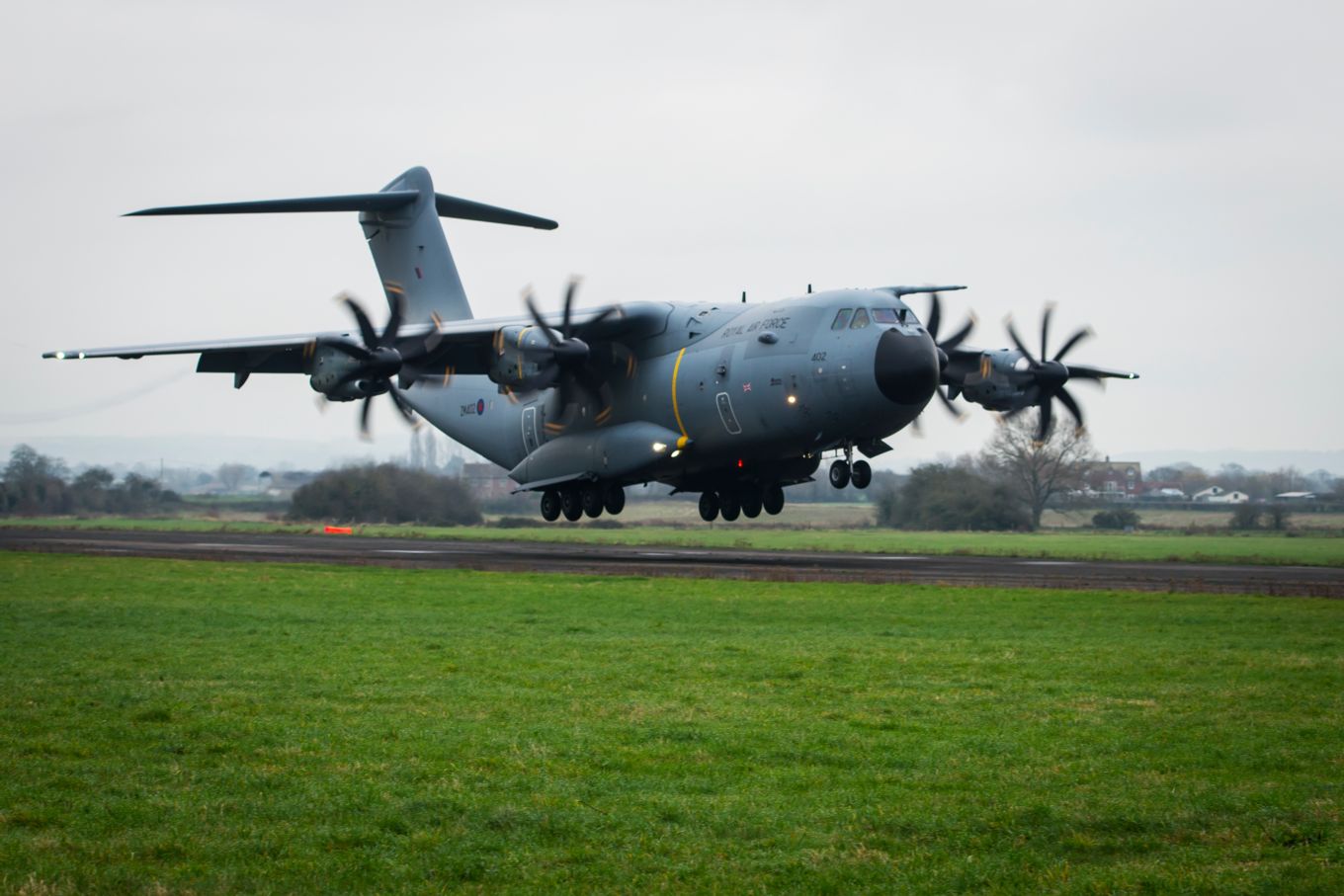
Throughout the first 24 hrs at Keevil, UK and French A400Ms flew in the reminder the of personnel of the 2 Para Battlegroup to sustain the momentum achieved by capturing the airbase before the next major assault
Alongside the TACTAC the Royal Air Force's Tactical Supply Wing (TSW) joined the exercise with suppliers, drivers and engineers. TSW support the battlefield helicopters of Joint Helicopter Command (JHC) and will be refuelling all the rotary assets on the exercise. TSW will also carry out onsite fuel assurance testing to make sure the fuel is up to the high specification required by testing the grade, looking for contamination and water particles.
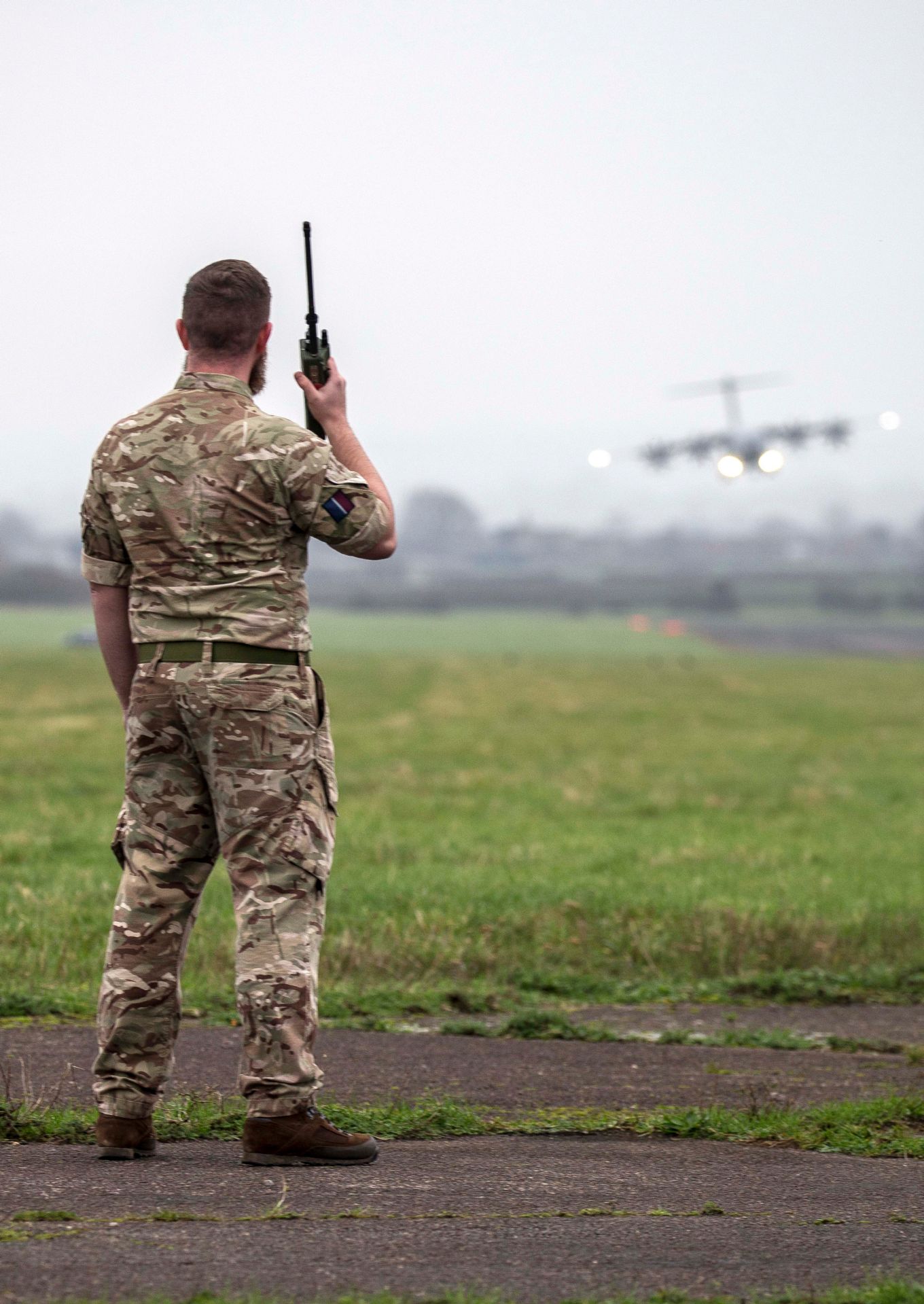
"Here at Keevil we are providing a four refuel spot FARP (Forward Arming and Refuelling Point), so we can fuel four helicopters at the same time. We've got the Oshkosh which is one of our bulk fuel carrying vehicles. We've got two types with us here, the Tactical Air Refueler Vehicle, and that holds 15,000 Litres and has two lines, and we've got two of those here today. In support of those, we have a Close Support Tanker and they are almost like a storage tanker vehicle for us, and we use those to refill the TAR and use it as a work horse. We literally go to a field and set-up.
"We get to work with other trades, and we work together with drivers and engineers, and it's quite diverse as well and always different. It's tri-service; we are all over the place. This year, I've been to Norway and Cyprus, and you are always busy."
Corporal Peter Blakeman
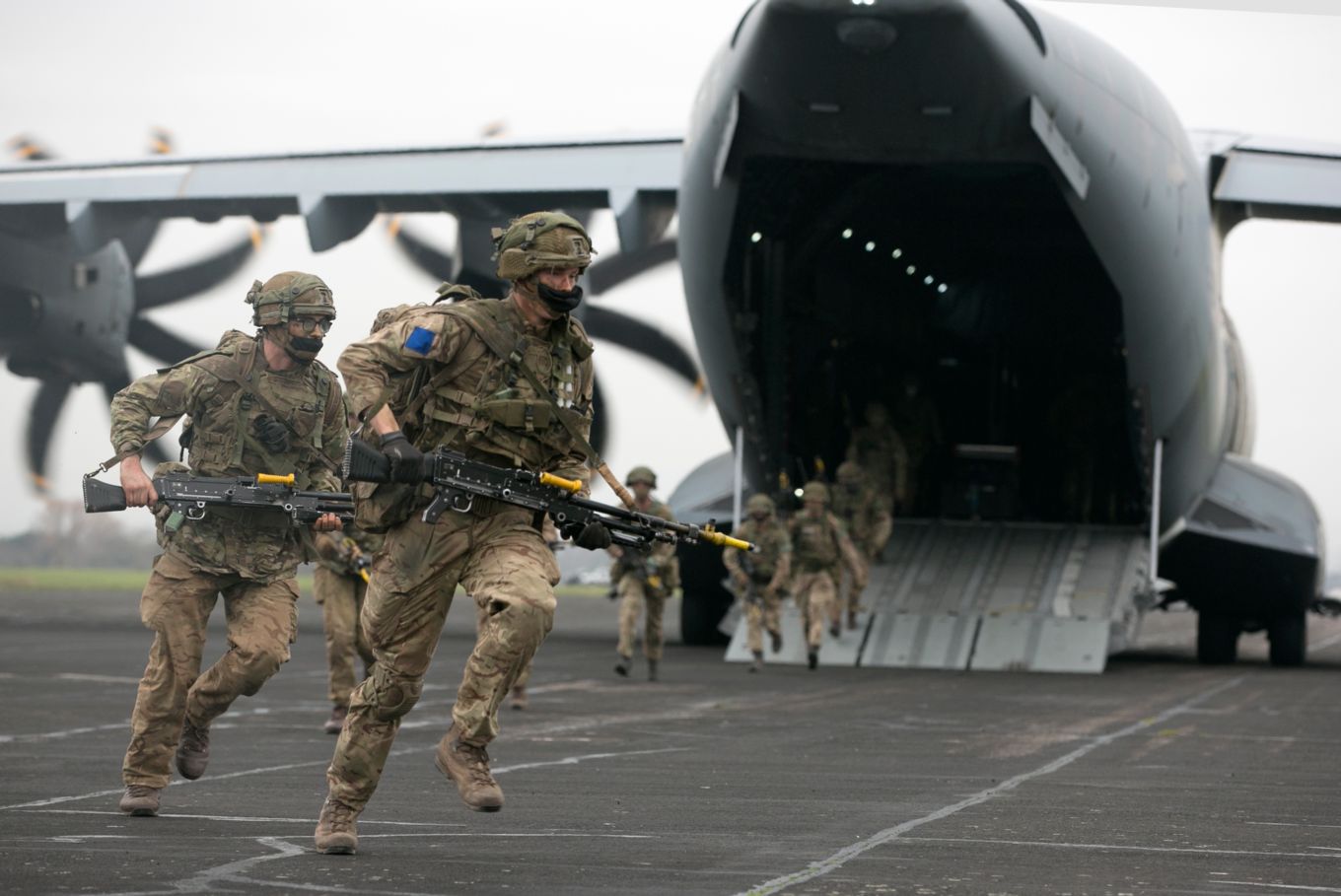
Wessex Storm is the most significant straightforward wheeled stock exercise (using Tankers) that TSW have been involved in recently, although they have still had overseas commitments. Total stock on the training exercise is 90,000 Litres, and on the main assault, through the four spots, the aircraft will use the fuel quickly. It all depends on the aircraft, how many hours they are flying.
Royal Air Force Regiment Joint Terminal Attack Controllers also are part of the exercise embedded within 16 Air Assault Brigade. Working as part of a Tactical Air Control Party (TACP) the JTAC's job is to coordinate aircraft and artillery fire in close proximity to friendly soldiers. Often under contact and in extreme pressure the JTAC provides the lifeline between troops on the ground and the pilot to deliver effective and appropriate air to ground fires to defeat an enemy.
Wessex Storm is being carried out with strict protocols to manage the threat of COVID-19 and will test the full range of military capabilities in a challenging environment and terrain.
Exercise Wessex Storm 2020 will conclude on 12 December 2020, after six weeks of training.
